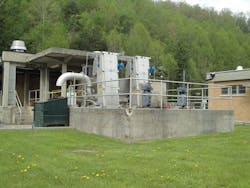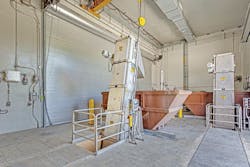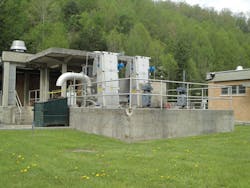Choosing the Best Screen for Your Application
By Wendi Richards
Screening is a component of every wastewater treatment plant and water intake facility. The question is whether it’s given the important status it deserves. Most plant operators will agree that the more they remove up front, the better off they are with less maintenance downstream. That’s a great goal but how do you reach it with so many mechanically-cleaned screen choices available?
The best approach is to first characterize what comes into your screen; second, assess what’s downstream that needs protection; and third, review the details of your plant layout and hydraulic profile to see what fits.
Characterize Screenings and Flow
What is the variability in screened flow rates? Is a sewer system combined, separated or both? Is flow by gravity or pumped, or through a grinder? Are there fats, oil and grease (FOG), certain sized solids, or fish in the flow? All these answers help determine the size, nature and rate of material coming into the facility, which in turn helps select the appropriate equipment. Large material coming in needs heavy duty equipment to take it out. On the flip side, smaller organic material may need filtering and better washing before compacting. Finally, how clean and dry do the removed screenings need to be for disposal?
Select a Screen to Do the Job
There are all kinds of equipment at a facility that require protection and the amount of protection determines the most suitable type of screen as well as grid type and opening size. For most wastewater plants, the trend is toward finer 1/4 inch or 6 mm openings and larger. But integrated fixed-film activated sludge (IFAS), membrane bioreactors (MBRs), and other technologies may require finer openings. In general, most pumps are protected by mechanical rake-type screens while fine screens with higher screening removal rates are more suitable for wastewater plant headworks and water intakes.
Coarse screens include chain- or cable-driven, reciprocating rake and catenary, and typically have openings larger than 1/4 inch. These may be configured with single or multiple rakes. Medium to fine screens include continuous self-cleaning through-flow, rotary drum or inclined screw, and band screens. Some installations require a coarse screen located ahead of a fine screen. Screen grids may consist of fixed bars, wire wedge, slots, or perforations with a range of opening sizes and materials of construction.
Within a screen type, each manufacturer differs in materials of construction, frame design, protection of moving parts from grit and debris, carrying capacity, and how the screen is cleaned. The amount of screenings that are not removed and carry over a screen - ending up downstream in the flow - is partially related to the off-loading methods and screen bypass. Rakes penetrate bars that return in front or behind the screen, brushes also make contact with the grid, while spray water makes no contact, thus reducing material forced through screen openings.
Plant Layout and Screen Fit
This is where the detailed engineering comes in. Once we’ve characterized the influent and determined a suitable screen and grid to protect equipment, the remaining question is: will it fit physically and hydraulically?
The existing channel dimensions and hydraulic profile are extremely important when determining the screening equipment that can fit. What is the existing downstream water level and what controls it? Are there any upstream water level limitations? There are guidelines for velocities both in the approach to a screen and through a screen grid. The velocity recommended through a grid varies depending on how clean a screen is. Some screens types are designed for 30 percent blinding while others need a more conservative 50 percent.
Will the equipment be inside or outside and need heat tracing? Are there limitations on the space for a screen (both headroom and angle of inclination)? Is there water available for equipment that requires it? Will conveyors or a water sluice be needed to bring screenings to a common washer/compactor? These are all important questions to ask when selecting the right screen to do the job.
Wendi Richards, P.E., is process engineering manager with Siewert Equipment with 25 years of engineering experience in water and wastewater treatment. She is a licensed professional engineer in New York and has BS and MS degrees in Environmental & Resource Engineering from the SUNY College of Environmental Science and Forestry (ESF). In her current role with Siewert Equipment, a division of Cummins-Wagner, Richards develops and manages all aspects of process treatment technology and equipment sales in New York State. For more information, please visit www.cummins-wagner.com.


